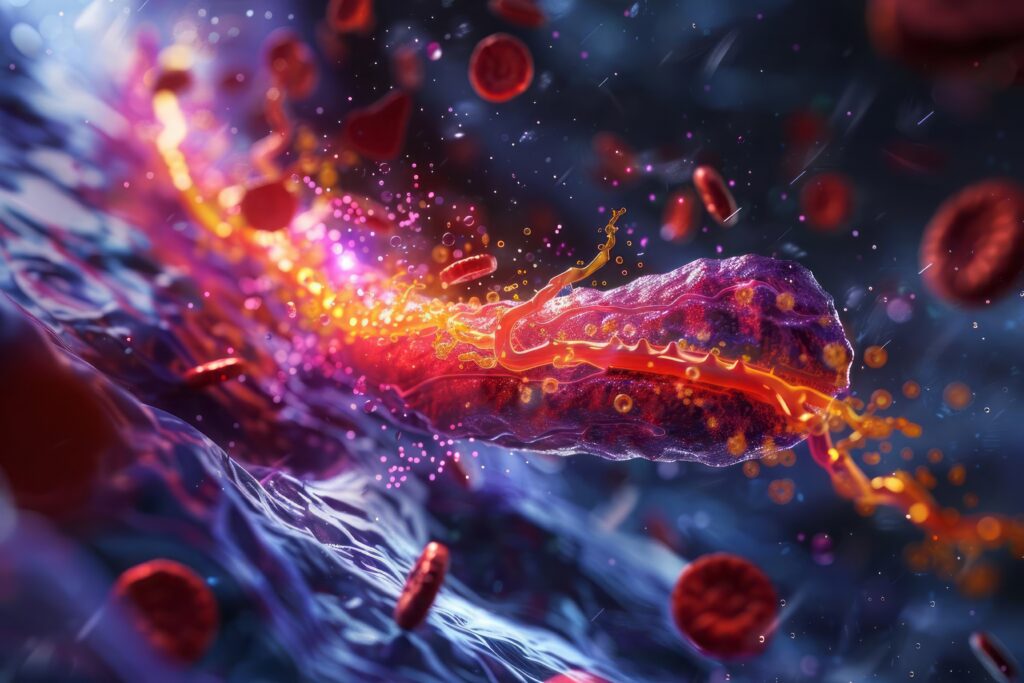Search Results
Showing Results for pleiotropic actions

Polycystic ovary syndrome (PCOS) is a complex, multisystemic condition characterized by reproductive, metabolic and dermatologic manifestations, including hyperandrogenism and ovulatory dysfunction. Despite its prevalence and significant impact on quality of life, PCOS remains underdiagnosed and poorly managed due to its ...

Dipeptidyl peptidase-4 (DPP-4) is a ubiquitous, multifunctional, 766-amino acid, type 2 transmembrane glycoprotein, which participates in the regulation of metabolic functions, immune and inflammatory responses, cancer growth and cell adhesion.1 It has two forms: the first is a membrane-bound form, which ...

Periodontitis is a chronic inflammatory disease of the periodontium, or the supportive tissues around the tooth, which includes the gingival tissue, alveolar bone, cementum and the periodontal ligament.1 Caused by pathogenic bacteria, this disease has been recognized for at least 5,000 ...

The incidence of youth-onset type 2 diabetes (T2D) is increasing.1,2 Growing evidence has demonstrated that youth-onset T2D is rapidly progressive, with earlier onset of life-limiting complications compared with adult-onset T2D.3,4 Initiation of effective treatment that can restore beta ...

Non-alcoholic fatty liver disease (NAFLD), which impacts an estimated 25% of the world’s adult population,1–3 is the principal cause of chronic liver disease globally. NAFLD as a whole represents a pathological spectrum of liver injury, spanning from simple steatosis to ...

Diabetes mellitus (DM) is a chronic metabolic disorder characterized by hyperglycaemia resulting from insulin resistance, inefficient insulin secretion and disproportionate glucagon secretion.1 It has been reported to be an expanding global health issue of the 21st century, and one of ...

Chronic kidney disease (CKD) represents one of the greatest future public health challenges due, among other consequences, to its elevated burden on economic and human resources within healthcare systems.1 Moreover, the rapid growth of type 2 diabetes mellitus (T2DM) results ...

Ghrelin is a 28-amino-acid peptide predominantly secreted in the stomach and stimulates appetite and growth hormone (GH) release. The name ghrelin is based on ‘ghre’ a word root in Proto-Indo-European languages meaning ‘grow’ in reference to its ability to stimulate ...

As a result of advanced medication regimens, particularly protease inhibitors (PIs), the life expectancy of HIV-infected adults has risen considerably. As a result of advanced medication regimens, particularly protease inhibitors (PIs), the life expectancy of HIV-infected adults has risen considerably. ...

Diabetes mellitus is becoming one of the most common diseases in the world. The number of people with diabetes is estimated to double in the next 20 years, reaching 350 million affected people by 2025 (see Figure 1). This will be accompanied by an ...

The main controversy in the area of lipid management today is related to the usefulness of ‘non-statin’ agents to maximize cardiovascular risk reduction in particular patient types, such as those with diabetes and metabolic syndrome. The main controversy in the ...

A second incretin hormone was discovered showing 50% homology with glucagon, and named glucagon-like peptide-1 (GLP-1). A second incretin hormone was discovered showing 50% homology with glucagon, and named glucagon-like peptide-1 (GLP-1). Both GLP-1 (mainly from L cells in the distal intestine) ...

Type 2 diabetes is characterised by high blood sugar caused by the inability of the pancreas to produce sufficient insulin, in combination with a loss of the normal reciprocal relationship between glucose and glucagon concentrations in the blood and impaired tissue ...

A second incretin hormone was discovered showing 50% homology with glucagon, and named glucagon-like peptide-1 (GLP-1). A second incretin hormone was discovered showing 50% homology with glucagon, and named glucagon-like peptide-1 (GLP-1). Both GLP-1 (mainly from L cells in the distal intestine) ...

However, statin-based interventions are unlikely to correct problems of triglycerides and HDL, whereas the use of fibrates has a stronger effect on the atherogenic dyslipidemia and might even produce significant LDL reduction in some patients. However, statin-based interventions are unlikely ...
Latest articles videos and clinical updates - straight to your inbox
Log into your Touch Account
Earn and track your CME credits on the go, save articles for later, and follow the latest congress coverage.
Register now for FREE Access
Register for free to hear about the latest expert-led education, peer-reviewed articles, conference highlights, and innovative CME activities.
Sign up with an Email
Or use a Social Account.
This Functionality is for
Members Only
Explore the latest in medical education and stay current in your field. Create a free account to track your learning.

